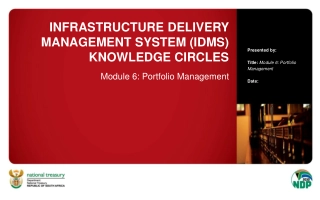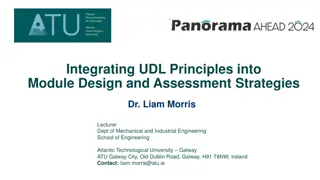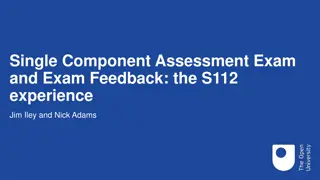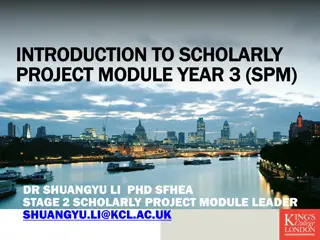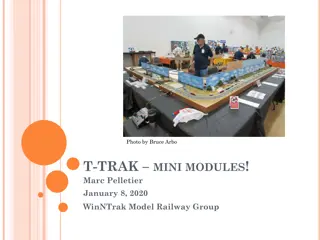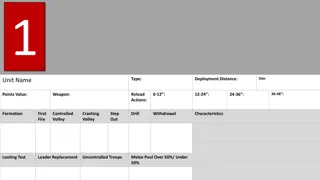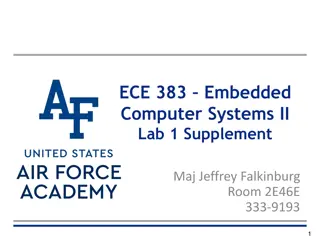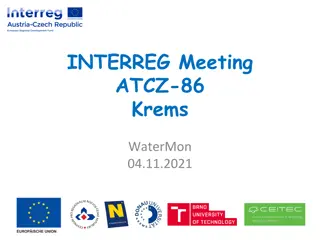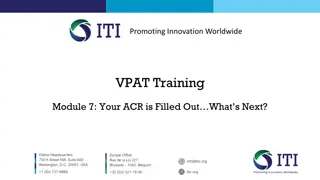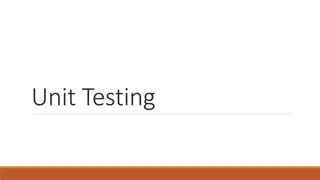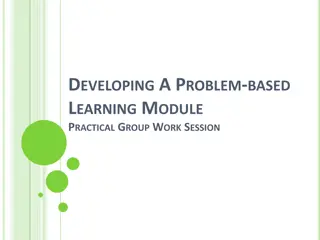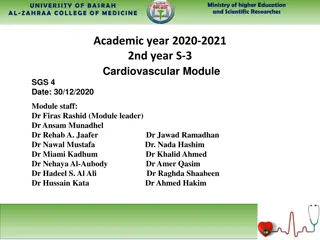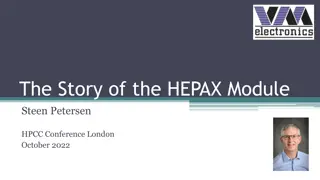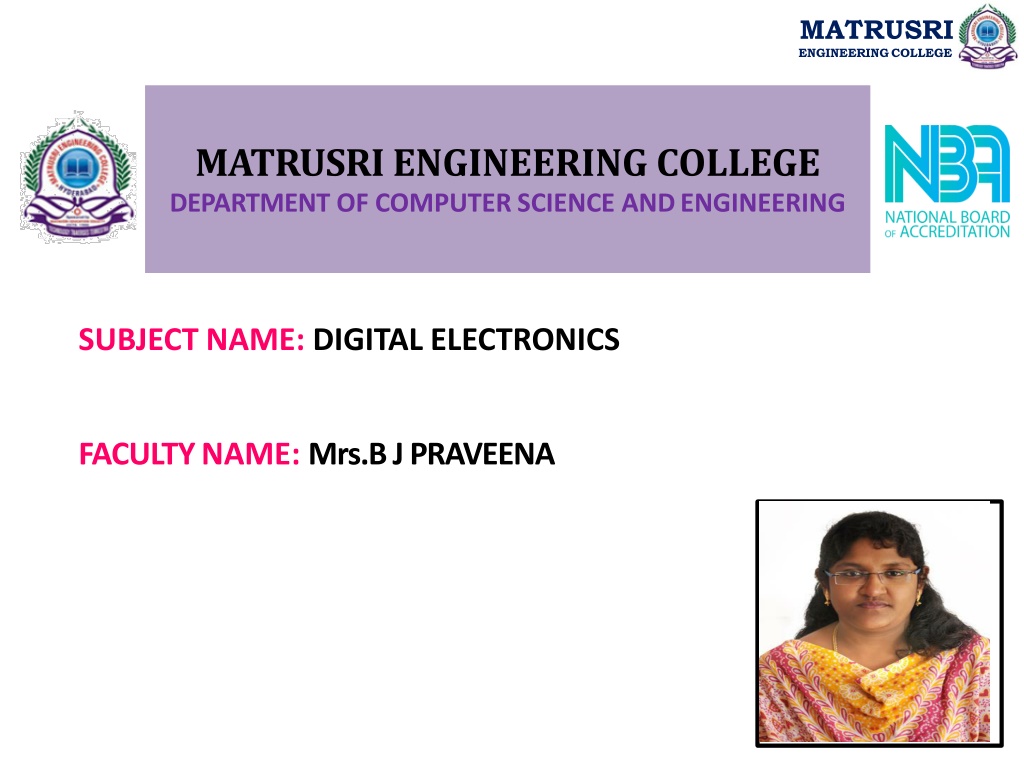
Digital Electronics Course at Matrusri Engineering College
Explore the comprehensive digital electronics course offered at Matrusri Engineering College, covering principles of digital hardware, Boolean algebra, logic gates, number systems, combinational circuits, flip-flops, registers, counters, and Finite State Machine design. Gain expertise in designing, implementing, and optimizing digital circuits while learning Verilog HDL. Enhance your understanding of sequential and synchronous circuits, along with FSM representation and minimization techniques. Elevate your skills in digital electronics under the guidance of Mrs. B.J. Praveena.
Download Presentation

Please find below an Image/Link to download the presentation.
The content on the website is provided AS IS for your information and personal use only. It may not be sold, licensed, or shared on other websites without obtaining consent from the author. Download presentation by click this link. If you encounter any issues during the download, it is possible that the publisher has removed the file from their server.
E N D
Presentation Transcript
MATRUSRI ENGINEERINGCOLLEGE MATRUSRI ENGINEERING COLLEGE DEPARTMENT OF COMPUTER SCIENCE AND ENGINEERING SUBJECT NAME: DIGITAL ELECTRONICS FACULTY NAME: Mrs.B J PRAVEENA
MATRUSRI ENGINEERING COLLEGE COURSE OBJECTIVES: 1. To introduce the principles of digital hardware, Boolean Algebra & Logic gates. 2. To learn various number system and combinational circuit building blocks. 3. To design combinational circuits for real world problems. 4. To introduce various flip-flops, registers & counters. 5. To introduce Finite State Machine and its design. COURSE OUTCOMES: On successful completion of this course, the students will be able to: 1. Understand the design process of digital hardware and minimizing the logic expressions using Boolean algebra. 2. Understand various number systems and design various combinational circuits. 3. To implement the combinational circuits using programmable logic devices and Verilog HDL. 4. To understand the implementation of various flip-flops, registers, counters and Verilog code for flip-flops. 5. To implement finite state machine representation using Moore and Mealy models & its minimization.
MATRUSRI ENGINEERING COLLEGE SYLLABUS UNIT-I: Design Concepts: Digital Hardware, Design process, Design of digital hardware, Introduction to logic circuits Variables and functions, Logic gates and networks, Boolean algebra, Synthesis using gates, Design examples. Optimized implementation of logic functions using K-Map, Quine- McCluskey Tabular method. UNIT-II: Number Representation: Addition and Subtraction of signed and unsigned numbers. Combinational circuit building blocks: Half adder, Full adder, Multiplexers. Decoders. Encoders, Code converters, BCD to 7-segment converter, Arithmetic comparison circuits.
MATRUSRI ENGINEERING COLLEGE UNIT-III: Design of combinational circuits using Programmable Logic Devices (PLDs): General structure of a Programmable Array Logic (PAL), Programmable Logic Arrays(PLAs), Structure of CPLDs and FPGAs, 2- input and 3-input lookup tables (LUTs) Introduction to Verilog HDL: Verilog code for basic logic gates, adders, decoders. UNIT-IV: Sequential Circuits: Basic Latch, Gated SR Latch, gated D Latch, Master-Slave edge triggered flip-flops, T Flip-flop, JK Flip-flop, Excitation tables. Registers, Counters, Verilog code for flip-flops UNIT-V: Synchronous Sequential Circuits: Basic Design Steps, Finite State machine (FSM) representation using Moore and Mealy state models, State minimization, Design of FSM for Sequence Generation and Detection, Algorithmic State Machine charts.
MATRUSRI ENGINEERINGCOLLEGE (UNIT-2)MODULE-I CONTENTS: Number Representation: Addition and Subtraction of signed and unsigned numbers. OUTCOMES: Understand various number systems and design various combinational circuits
MATRUSRI ENGINEERINGCOLLEGE Digital Systems They manipulate discrete information (A finite number of elements) Example discrete sets 10 decimal digits, the 26 letters of alphabet Information is represented in binary form Examples Digital telephones, digital television, and digital cameras The most commonly used one is DIGITAL COMPUTERS Binary Systems 6
MATRUSRI ENGINEERINGCOLLEGE Digital Computers CENTRAL PROCESSING UNIT Registers R1 Arithmetic Logic Unit (ALU) Control Unit R2 Rn Bus Main Memory Disk Keyboard Printer Binary Systems 7 I/O Devices
MATRUSRI ENGINEERINGCOLLEGE Binary Signals It means two-states 1 and 0 true and false on and off A single on/off , true/false , 1/0 is called a bit Example: Toggle switch Binary Systems 8
MATRUSRI ENGINEERINGCOLLEGE Byte Computer memory is organized into groups of eight bits Each eight bit group is called a byte Binary Systems 9
MATRUSRI ENGINEERINGCOLLEGE Why Computers Use Binary They can be represented with a transistor that is relatively easy to fabricate (in silicon) Millions of them can be put in a tiny chip Unambiguous signal (Either 1 or 0) This provides noise immunity Binary Systems 10
MATRUSRI ENGINEERINGCOLLEGE Analog Signal Binary Systems 11
MATRUSRI ENGINEERINGCOLLEGE Binary Signal A voltage below the threshold off A voltage above the threshold on Binary Systems 12
MATRUSRI ENGINEERINGCOLLEGE Binary Signal Binary Systems 13
MATRUSRI ENGINEERINGCOLLEGE Noise on Transmission When the signal is transferred it will pick up noise from the environment Binary Systems 14
MATRUSRI ENGINEERINGCOLLEGE Recovery Even when the noise is present the binary values are transmitted without error Binary Systems 15
MATRUSRI ENGINEERINGCOLLEGE Binary Numbers A number in a base-r system x = xn-1xn-2 ... x1x0 .x-1 x-2 ... X-(m-1) x-m = + + + + + + + 1 2 0 1 2 n n m ( ) ... ... Value x x r x r x r x r x r x r 1 2 0 1 2 n n m = + + + + = 2 1 0 1 2 ( 234 26 . ) 2 6 3 6 4 6 2 6 6 6 94 ( ) 5 . 6 10 = + + = 1 0 1 ( 45 ) 4 . 4 8 5 8 4 8 39 ( ) 5 . 8 10 Binary Systems 16
MATRUSRI ENGINEERINGCOLLEGE Radix Number System Base 2 (binary numbers) 0 1 Base 8 (octal numbers) 0 1 2 3 4 5 6 7 Base 16 (hexadecimal numbers) 0 1 2 3 4 5 6 7 8 9 A B C D E F Binary Systems 17
MATRUSRI ENGINEERINGCOLLEGE Radix Operations The same as for decimal numbers 101 11001011 11001011 * 110 +10011101 - 10011101 000 101101000 00101110 1010 +10100 11110 Binary Systems 18
MATRUSRI ENGINEERINGCOLLEGE Conversion From one radix to another From decimal to binary Binary Systems 19
MATRUSRI ENGINEERINGCOLLEGE Conversion From one radix to another From decimal to base-r Separate the number into an integer part and a fraction part For the integer part Divide the number and all successive quotients by r Accumulate the remainders 165 0.6875 x 2 = 1 + 0.3750 4 23 0.3750 x 2 = 0 + 0.7500 2 3 0.7500 x 2 = 1 + 0.5000 3 0 0.5000 x 2 = 1 + 0.0000 = . 0 ( 6875 ) . 0 ( 1011 ) = 165 ( ) 324 ( ) 10 2 10 7 Binary Systems 20
MATRUSRI ENGINEERINGCOLLEGE Different Bases Binary Systems 21
MATRUSRI ENGINEERINGCOLLEGE Conversion From one radix to another From binary to octal Divide into groups of 3 bits Example 11001101001000.1011011 = 31510.554 From octal to binary Replace each octal digit with three bits Example 75643.5704 = 111101110100011.101111000100 Binary Systems 22
MATRUSRI ENGINEERINGCOLLEGE Conversion From one radix to another From binary to hexadecimal Divide into groups of 4 bits Example 11001101001000.1011011 = 3348.B6 From hexadecimal to binary Replace each digit with four bits bits Example 7BA3.BC4 = 111101110100011.101111000100 Binary Systems 23
MATRUSRI ENGINEERINGCOLLEGE Complements They are used to simplify the subtraction operation Two types (for each base-r system) Diminishing radix complement (r-1 complement) Radix complement (r complement) For n-digit number N ) 1 rn ( N r-1 complement rn N r complement Binary Systems 24
MATRUSRI ENGINEERINGCOLLEGE 9 s and 10 s Complements 9 s complement of 674653 999999-674653 = 325346 9 s complement of 023421 999999-023421 = 976578 10 s complement of 674653 325346+1 = 325347 10 s complement of 023421 976578+1=976579 Binary Systems 25
MATRUSRI ENGINEERINGCOLLEGE 1 s and 2 s Complements 1 s complement of 10111001 11111111 10111001 = 01000110 Simply replace 1 s and 0 s 1 s complement of 10100010 01011101 2 s complement of 10111001 01000110 + 1 = 01000111 Add 1 to 1 s complement 2 s complement of 10100010 01011101 + 1 = 01011110 Binary Systems 26
MATRUSRI ENGINEERINGCOLLEGE Subtraction with Complements of Unsigned M N Add M to r s complement of N Sum = M+(rn N) = M N+ rn If M > N, Sum will have an end carry rn , discard it If M<N, Sum will not have an end carry and Sum = rn (N M) (r s complement of N M) So M N = (r s complement of Sum) Binary Systems 27
MATRUSRI ENGINEERINGCOLLEGE Subtraction with Complements of Unsigned 65438 - 5623 65438 10 s complement of 05623 +94377 159815 Discard end carry 105 -100000 Answer 59815 Binary Systems 28
MATRUSRI ENGINEERINGCOLLEGE Subtraction with Complements of Unsigned 5623 - 65438 05623 10 s complement of 65438 +34562 40185 There is no end carry => -(10 s complement of 40185) -59815 Binary Systems 29
MATRUSRI ENGINEERINGCOLLEGE Subtraction with Complements of Unsigned 10110010 - 10011111 10110010 2 s complement of 10011111 +01100001 100010011 Discard end carry 2^8 -100000000 Answer 000010011 Binary Systems 30
MATRUSRI ENGINEERINGCOLLEGE Subtraction with Complements of Unsigned 10011111 -10110010 10011111 2 s complement of 10110010 +01001110 11101101 There is no end carry => -(2 s complement of 11101101) Answer = -00010011 Binary Systems 31
MATRUSRI ENGINEERINGCOLLEGE Signed Binary Numbers Unsigned representation can be used for positive integers How about negative integers? Everything must be represented in binary numbers Computers cannot use or + signs Binary Systems 32
MATRUSRI ENGINEERINGCOLLEGE Negative Binary Numbers Three different systems have been used Signed magnitude One s complement Two s complement NOTE: For negative numbers the sign bit is always 1, and for positive numbers it is 0 in these three systems Binary Systems 33
MATRUSRI ENGINEERINGCOLLEGE Signed Magnitude The leftmost bit is the sign bit (0 is + and 1 is - ) and the remaining bits hold the absolute magnitude of the number Examples -47 = 1 0 1 0 1 1 1 1 47 = 0 0 1 0 1 1 1 1 For 8 bits, we can represent the signed integers 128 to +127 How about for N bits? Binary Systems 34
MATRUSRI ENGINEERINGCOLLEGE One s complement Replace each 1 by 0 and each 0 by 1 Example (-6) First represent 6 in binary format (00000110) Then replace (11111001) Binary Systems 35
MATRUSRI ENGINEERINGCOLLEGE Two s complement Find one s complement Add 1 Example (-6) First represent 6 in binary format (00000110) One s complement (11111001) Two s complement (11111010) Binary Systems 36
MATRUSRI ENGINEERINGCOLLEGE Arithmetic Addition Usually represented by 2 s complement Discard + 5 00000101 - 5 11111011 +11 00001011 +11 00001011 +16 00010000 +6 100000110 + 5 00000101 - 5 11111011 -11 11110101 -11 11110101 -6 11111010 -16 111110000 Discard Binary Systems 37
MATRUSRI ENGINEERINGCOLLEGE Registers They can hold a groups of binary data Data can be transferred from one register to another Binary Systems 38
MATRUSRI ENGINEERINGCOLLEGE Processor-Memory Registers Binary Systems 39
MATRUSRI ENGINEERINGCOLLEGE Operations Binary Systems 40
MATRUSRI ENGINEERINGCOLLEGE Logic Gates - 1 Binary Systems 41
MATRUSRI ENGINEERINGCOLLEGE Logic Gates - 2 Binary Systems 42
MATRUSRI ENGINEERINGCOLLEGE Ranges The gate input The gate output Binary Systems 43
MATRUSRI ENGINEERINGCOLLEGE Study Problems Course Book Chapter 1 Problems 1 2 1 7 1 8 1 20 1 34 1 35 1 36 Binary Systems 44
MATRUSRI ENGINEERINGCOLLEGE Sneak Preview Next time ASSIGNMENT Will be given QUIZ . Expect a question from each one of the following Convert decimal to any base Convert between binary, octal, and hexadecimal Binary add, subtract, and multiply Negative numbers Binary Systems 45

